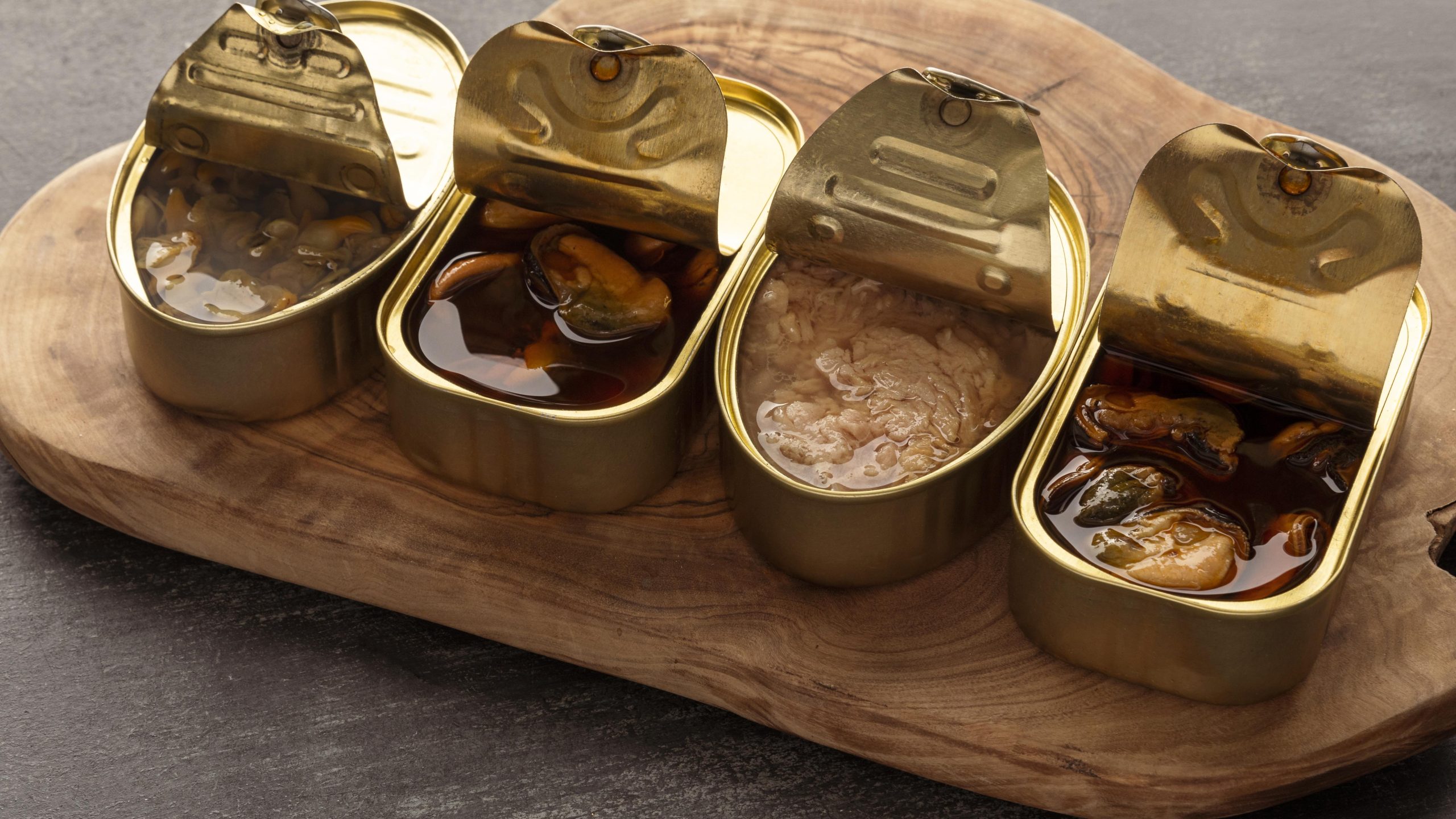Have you ever found yourself pondering the reason behind the steep price tag of tinned fish? It’s a question that has intrigued many, and in this article, we will explore the factors that contribute to the high cost of this pantry staple. From its sudden surge in popularity to the alluring umami element and health benefits, there’s more to tinned fish than meets the eye. So, if you’re curious to uncover the secrets behind its expensive nature, join us as we dive into the fascinating world of tinned fish and discover the intriguing reasons that make it a pricier choice.
Sudden Popularity and Increased Prices
The sudden popularity of tinned fish has resulted in increased prices due to scarcity and growing market demand. The supply chain challenges brought about by this newfound popularity have played a significant role in driving up prices. As more people have turned to tinned fish as a delicacy, the demand has surpassed the available supply, leading to scarcity. This scarcity, coupled with the influence of TikTok, where videos showcasing the versatility and taste of tinned fish have gone viral, has further fueled the demand.
Market growth projections have also contributed to the increased prices. With experts forecasting that the canned fish market will reach $11.3 billion by 2027, producers and distributors are capitalizing on the growing demand by raising their prices. Additionally, the perception that pricier tins indicate higher quality and better taste has led to inflated price points in the market.
Umami Element and Health Benefits
With its umami flavor and numerous health benefits, tinned fish has become a popular ingredient in both traditional and trendy dishes. Here are four reasons why tinned fish is a sought-after culinary choice:
- Tinned fish in recipes: Tinned fish adds a unique depth of flavor, known as umami, to a variety of recipes. From pasta dishes to salads, tinned fish brings a savory richness that enhances the overall taste profile of the dish.
- Tinned fish vs fresh fish: While fresh fish is often considered the gold standard, tinned fish offers convenience and a longer shelf life without compromising nutritional value. Tinned fish contains high levels of omega-3 fatty acids, which are essential for heart health and brain function.
- Omega-3 benefits: Tinned fish is a rich source of omega-3 fatty acids, which have been linked to numerous health benefits, including reducing inflammation, improving cardiovascular health, and supporting brain health. Incorporating tinned fish into your diet can be a convenient way to reap these omega-3 benefits.
- Tinned fish as a delicacy: In Spanish tapas restaurants and Polish Christmas tables, tinned fish is considered a delicacy. Opting for pricier tins often indicates higher quality and better taste. The process of hand-packing the fish and ensuring a sustainable supply chain contributes to the higher price point, making tinned fish a symbol of sophistication and indulgence.
Easy Ways to Enjoy Canned Seafood
To fully appreciate the convenience and deliciousness of canned seafood, try these easy and creative ways to incorporate it into your meals. Whether you’re looking for quick meal options or want to explore international cuisines, tinned fish can be a versatile and sustainable choice. Here are some ideas to get you started:
| Tinned Fish Recipes | Pairing Tinned Fish with Wine |
|---|---|
| Smoked sardine fillets with mustard and crackers | Pair with a crisp white wine like Sauvignon Blanc |
| Cooked oyster bar moment with oysters and hot sauce | Pair with a sparkling wine like Champagne or Prosecco |
| Experiment with anchovies by adding acid and spice | Pair with a dry rosé or a light-bodied red like Pinot Noir |
| Explore a ranking of canned sardines for variety | Pair with a medium-bodied white wine like Chardonnay |
Canned seafood is not only convenient, but it also provides a quick and easy meal option. Simply open the can and enjoy the flavorful fish on its own or incorporate it into salads, sandwiches, or pasta dishes. Tinned fish is a staple in many international cuisines, such as Spanish tapas and Polish Christmas tables, adding a unique and delicious touch to traditional dishes. Additionally, choosing tinned fish supports sustainability, as it is often sourced from well-managed fisheries. So next time you’re looking for a tasty and sustainable seafood choice, don’t forget to reach for a can of tinned fish.
Factors Contributing to High Prices
One of the key factors contributing to the high prices of tinned fish is the expensive process of ensuring a high-quality and sustainable supply chain. This involves several challenges and considerations that impact the overall cost of tinned fish. Here are four factors contributing to the high prices:
- Sustainability challenges: Tinned fish producers face the task of sourcing fish from sustainable fisheries. This requires careful monitoring of fishing practices to prevent overfishing and protect marine ecosystems. Sustainable fishing methods are often more expensive, leading to higher production costs.
- Impact on local grocery stores: The rising demand for tinned fish, fueled in part by the TikTok trend, has created shortages in local grocery stores. This scarcity drives up prices as stores struggle to meet the increased demand, resulting in higher prices for consumers.
- Consumer education: Many consumers are willing to pay a premium for high-quality tinned fish, but they need to be educated about the reasons behind the higher prices. Companies like Fishwife play a vital role in educating consumers about the value of sustainable sourcing and the benefits of premium tinned fish.
- Fishwife’s growth and challenges: Fishwife, a popular brand among TikTok users, has experienced significant growth. However, building a sustainable supply chain has been a rigorous process, leading to higher production costs. As Fishwife continues to grow, they face the challenge of scaling their operations while maintaining high quality and sustainability standards.
These factors, among others, contribute to the high prices of tinned fish. While the market for tinned fish is projected to grow, addressing sustainability challenges, educating consumers, and finding ways to mitigate the impact on local grocery stores will be essential for the industry’s future success.
Unlikelihood of Price Decrease
The unlikelihood of a price decrease in high-quality tinned seafood is supported by several factors. Firstly, the growing market size indicates that prices will remain high. As the demand for tinned fish continues to rise, the scarcity of supply contributes to the high prices. Additionally, industry studies and market projections suggest that there is no indication of a decrease in prices in the near future.
High-quality tinned seafood products are already priced at a premium due to their superior taste and quality. The hand-packing process and the need to ensure a high-quality and sustainable supply chain further increase the costs. Finding canneries that can meet the growing demand is also a challenge, leading to inflated price points.
The combination of scarcity and high demand for tinned fish creates a situation where prices are unlikely to decrease. As the market for tinned seafood continues to grow, industry predictions support the notion that prices will remain high. Therefore, consumers should not expect a decrease in prices for high-quality tinned seafood in the foreseeable future.
Rise of Tinned Fish as a Trendy Food
The rise of tinned fish as a trendy food has captured the attention of food enthusiasts and social media influencers alike. This newfound popularity can be attributed to several factors, including the European influence on American cuisine, the emergence of indie brands, and the growing interest in having an adventurous palate.
Here are four key reasons why tinned fish has become such a trendy food:
- European influence: Tinned fish has long been a staple in European cuisine, particularly in countries like Spain and Portugal. As more Americans travel to these destinations and experience the culinary delights of tinned fish, their interest in incorporating it into their own meals has grown.
- Indie brands: The rise of indie brands specializing in tinned fish has further fueled its popularity. These brands offer a wide range of high-quality and unique options, appealing to consumers who want to explore different flavors and textures.
- Adventurous palate: Tinned fish is seen as a symbol of having an adventurous palate. It allows people to try new and exotic flavors without the need for extensive cooking or preparation.
- Specialty shops: The emergence of specialty shops dedicated to tinned fish has made it more accessible to consumers. These shops curate a selection of premium tinned fish from around the world, offering a one-stop destination for enthusiasts to explore and purchase their favorite varieties.
As the trend continues to gain momentum, tinned fish is no longer just a pantry staple but a sought-after delicacy for those seeking a unique and flavorful dining experience.
Limitations of Tinned Fish
With the rise of tinned fish as a trendy food, it is important to consider the limitations that come with this culinary choice. One significant limitation is the rubbery texture that tinned fish can have. This is especially true for delicate shellfish, which are often cooked at high temperatures in the canning process, resulting in a less-than-ideal texture.
Another limitation is the comparison between the taste and texture of fresh fish versus tinned fish. While tinned fish can offer convenience and a longer shelf life, fresh fish generally provides a superior taste and texture. This is an important consideration when deciding between the two options.
Price is also a factor to consider. Fancy tinned fish can be significantly more expensive than fresh fish. This is due to factors such as the cost of ensuring a high-quality, sustainable supply chain and the hand-packing of fish, which increases costs. It’s important to weigh the cost against the perceived luxury of tinned fish.
Lastly, tinned fish lacks the freshness and quality of freshly cooked fish. While tinned fish can still be enjoyable and convenient, it may not provide the same level of freshness as a freshly cooked fish dish.
Appeal and Aesthetics of Tinned Fish
Tinned fish has gained appeal and popularity not only for its convenience and longer shelf life, but also for its aesthetic appeal in presentation and its symbolic status as a trendy food choice for food sophisticates. Here are some reasons why tinned fish is visually appealing and has become a status symbol:
- Visually appealing: Tinned fish, when presented on a wooden board with crackers and olives, can create a visually stunning display. The vibrant colors of the fish, along with the different textures and shapes, make it an attractive addition to any meal or snack.
- Status symbol: Tinned fish has become a trendy food item that is associated with sophistication and a refined palate. It is seen as a symbol of being worldly and adventurous in one’s food choices. Opting for high-quality tins of fish indicates a certain level of taste and discernment.
- Trendy food: Tinned fish has gained popularity on social media platforms like Instagram, where food enthusiasts showcase their culinary creations. Its inclusion in food posts adds to its appeal and makes it more desirable among foodies and influencers.
- Pantry staple: Tinned fish has become a pantry staple for many people. Its long shelf life and convenience make it a practical choice for quick and easy meals. The fact that it can be enjoyed straight from the tin without the need for thawing or worrying about spoilage adds to its appeal.


